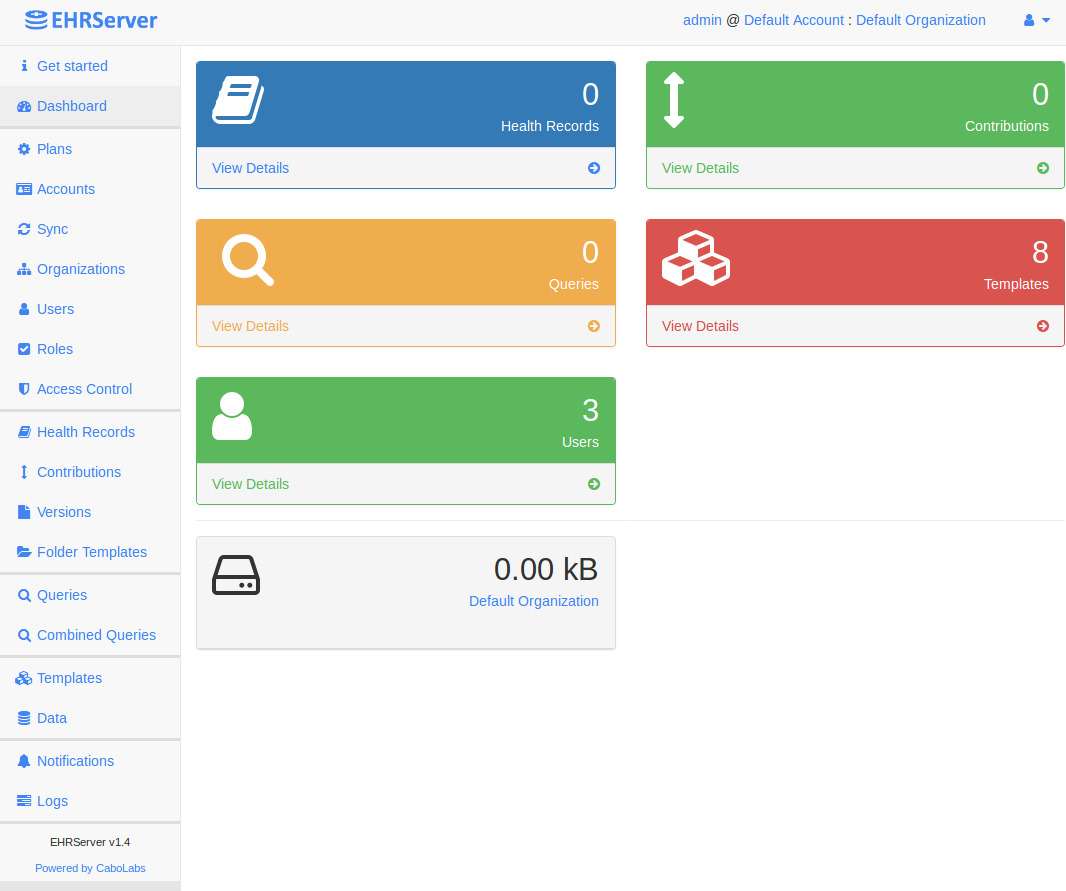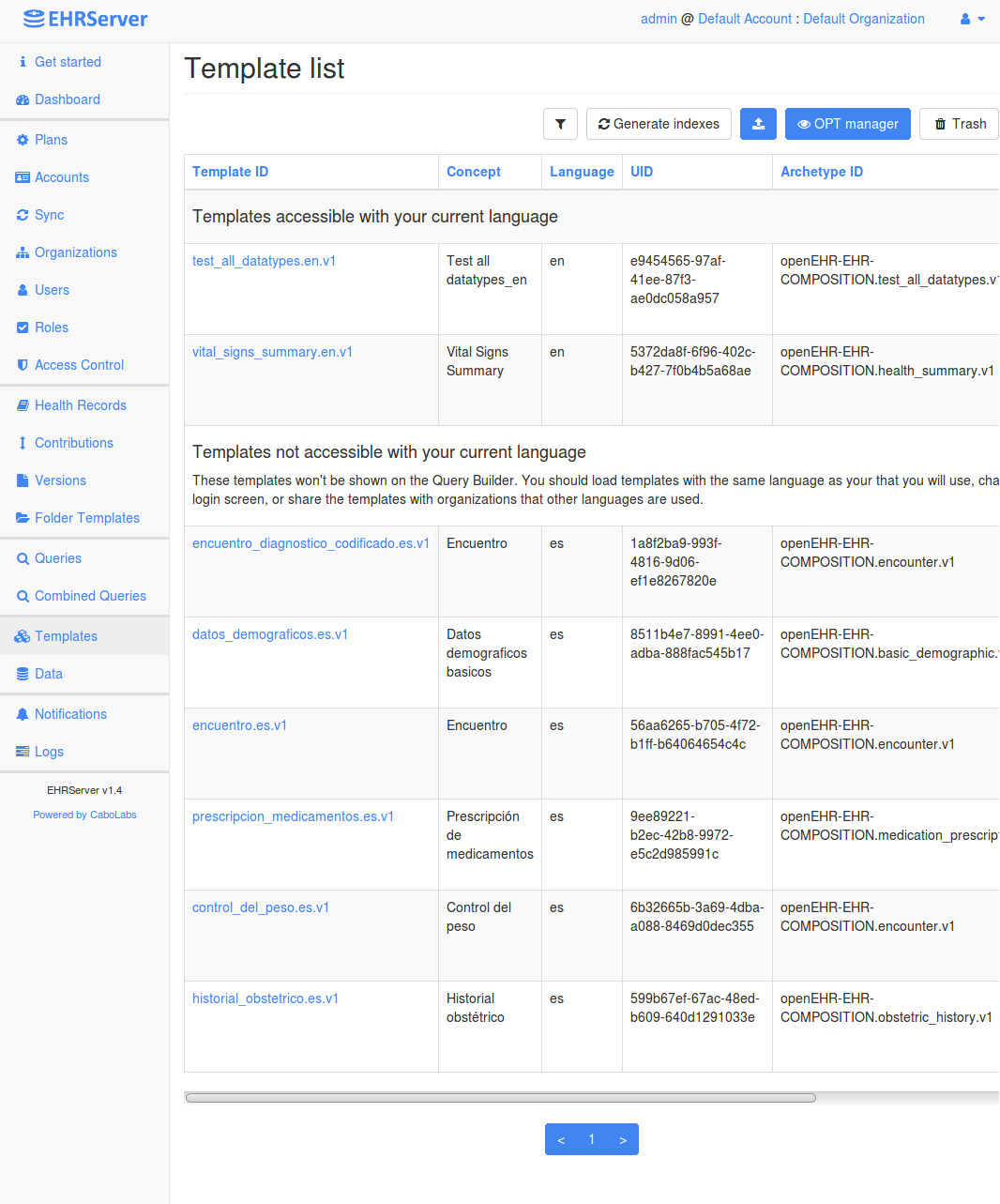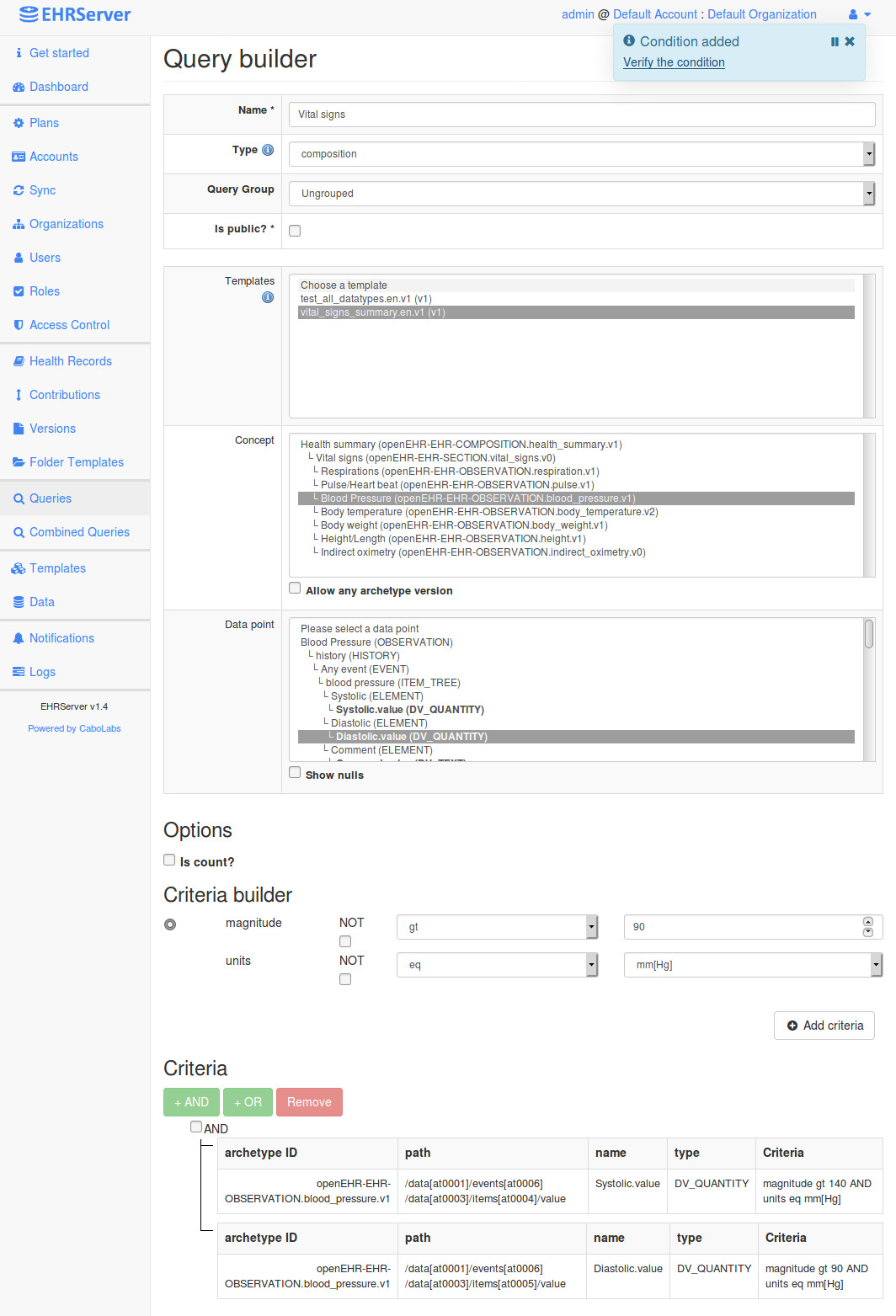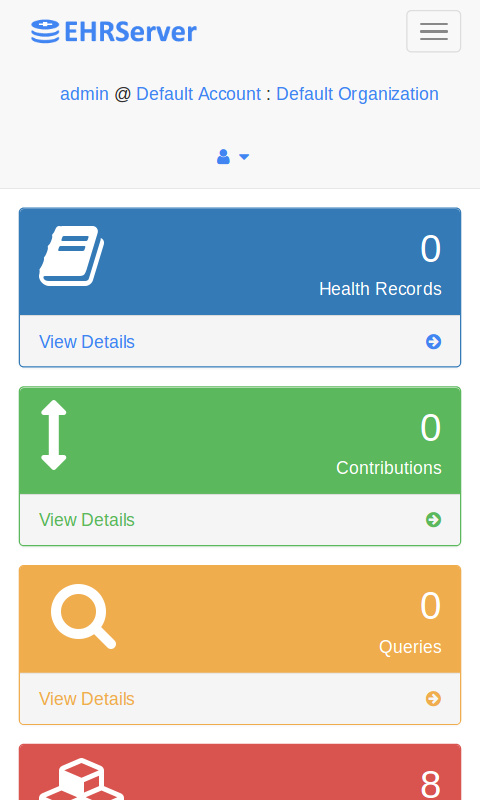EHRServer is the first open source Clinical Data Management and Sharing Platform, compliant with the openEHR standard. Use it as a:
- Primary clinical data repository for web and mobile clinical apps.
- Secondary repository for backup or analysis.
- Centralized repository to share clinical information between many systems.
- Fast prototyping of new health related apps, removing the need of creating the clinical repo yourself.
- Main or proxy repository for wearable and other monitoring-based clinical data.
- Standardized aggregation repository as a data source for ETL to datawarehouses and analytics tools.
- Research and training clinical data repository.
- Backend for Clinical Decision Support tools (e.g. rule engines)
EHRServer was designer for developers by developers. You don't need to be an openEHR guru to use it. Easy to install, use, manage and integrate.
Quick look at what is happening in the EHRServer.
Manage clinical document definitions from the Template Manager, defining what data could be stored and queried.
Very simple point and click query creation in seconds, no programming needed.
Mobile friendly user interface, adapts to small screens.
- REST API provides services to integrate the EHRServer to your systems and apps (documentation).
- Web Console provides a user interfaces for administrators of the EHRServer (check the screenshots above).
- Query Builder is the component in charge of creating, managing and executing queries over openEHR data stored in the EHRServer.
- SNOMED Query is a component in charge of processing the terminologic constraints in queries that contain SNOMED CT Expressions. This component is part of the SNQUERY tool developed by VeraTech
- EHR Base is where data is managed, indexed, versioned and stored.
- openEHR compliant clinical data repository
- Administrative Web Console
- Simple but powerful REST API
- Supports XML and JSON
- Full audit access for traceability
- Versioned clinical documents
- Query Builder from the Web Console to create data queries (no programming needed!)
- Support of SNOMED CT Expressions on openEHR queries (simplifies complex queries)
- Supports any structure of clinical document (following the openEHR standard information model)
- Vendor Neutral Archive
- Multitenancy
One way of supporting this project and our vision for building a completely open e-health platform, is through community donations. This is used for servers, dev tools, pay for dev time, maintain the website, updated documentation and guides.
Another way of supporting the project is by subscribing to the CloudEHRServer
Thanks for your support!
- Let me know if you are using the EHRServer!
- Asks questions and get support
- LinkedIn Group
- Facebook Group
- Installing EHRServer
- Subscribe to CloudEHRServer
- Run with docker-compose:
- $ grails war
- $ cd docker-compose
- $ docker-compose up
- localhost:8080 will be Adminer (a MySQL manager) (default user: ehrserver2/ehrserver2)
- localhost:8888 will be Tomcat (running EHRServer) (default user: admin@cabolabs.com/admin)
- Change the ports and SMTP configuration in the docker-compose file (optional, for user management like password reset)
This guide is based on a Linux environment, should be adapted for other OS.
- curl -s get.sdkman.io | bash
- source "$HOME/.sdkman/bin/sdkman-init.sh"
- sdk install grails 3.3.10
- set version by default: Y
- grails -version
Note: Grails should be 3.3.10!
Install MySQL
MySQL >= 5.7
- sudo mysql -u root
- CREATE DATABASE ehrserver2;
- exit
MySQL < 5.7
- from the installation process, copy the default root password
- ./mysql -u root -p
- enter default root password, and proceed to change it
- ALTER USER 'root'@'localhost' IDENTIFIED BY 'NEW-ROOT-PASSWORD';
- CREATE DATABASE ehrserver2;
- exit
On any version you can also create a non-root user and use that to access your EHRServer database.
- create user 'user'@'localhost' identified by 'your_password';
- grant all on ehrserver2.* to 'user'@'localhost';
- select host, user from mysql.user;
- exit
- mysql -u user -p
- nano ehrserver/conf/application.yml
- change development password to NEW-ROOT-PASSWORD
- save
Mandatory:
export EHRSERVER_REST_SECRET="6067dba9-1417-41c5-b1af-92208c77ce77"
export EHRSERVER_SNQUERY_KEY="22222222-2222-2222-2222-222222222222"
Optional:
export EHRSERVER_EMAIL_FROM="user@yourdomain.com"
export EHRSERVER_EMAIL_HOST="mail.yourdomain.com"
export EHRSERVER_EMAIL_PORT=1234
export EHRSERVER_EMAIL_USER="user@yourdomain.com"
export EHRSERVER_EMAIL_PASS="youruserpassword"
export EHRSERVER_ALLOW_WEB_USER_REGISTER=false
Conditional:
If EHRSERVER_ALLOW_WEB_USER_REGISTER =>
export EHRSERVER_RECAPTCHA_SITEKEY="generate a recaptcha v2 site key"
export EHRSERVER_RECAPTCHA_SECRETKEY="generate a recaptcha v2 secret key"
If you want to use AWS S3 for file storage =>
export EHRSERVER_S3_ACCESS="your config in S3"
export EHRSERVER_S3_SECRET="your config in S3"
export EHRSERVER_S3_BUCKET="your config in S3"
export EHRSERVER_S3_REGION="your config in S3"
- cd ehrserver
- grails run-app
- open http://localhost:8090
- login with admin/admin/123456
I you need more speed and mono-tenancy EHR server, please check this Atomik! https://atomik.app/





